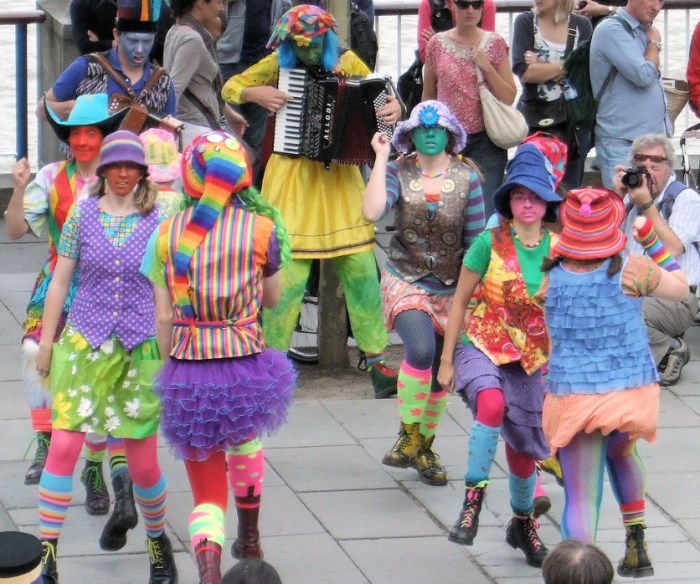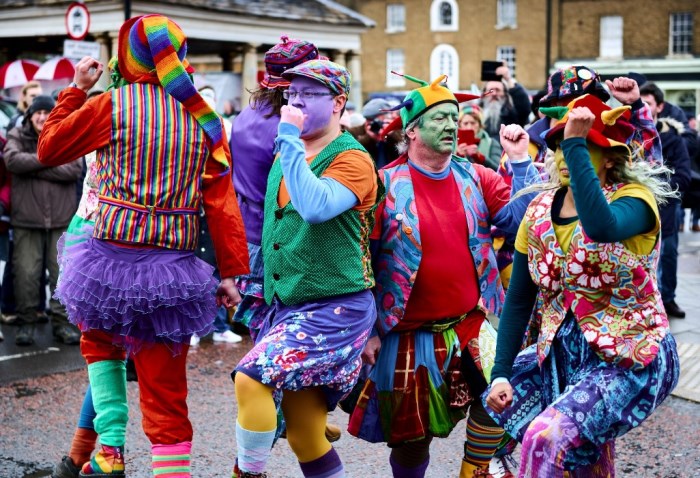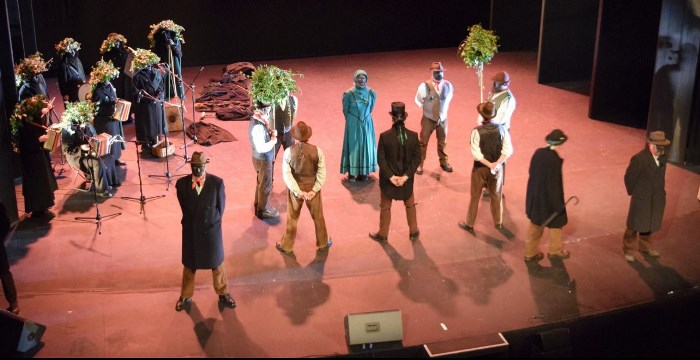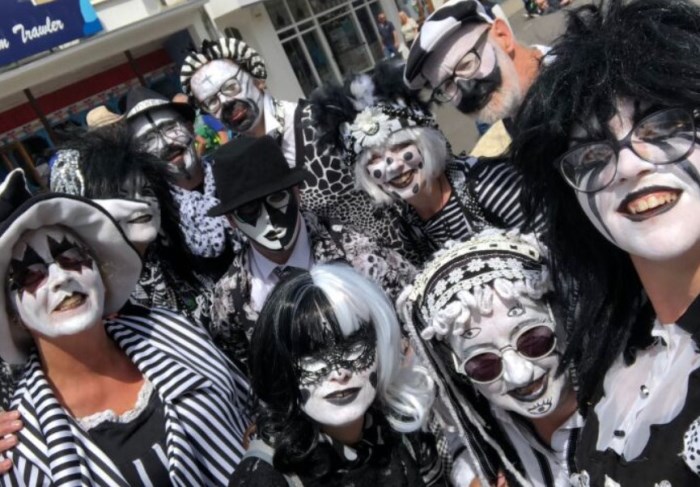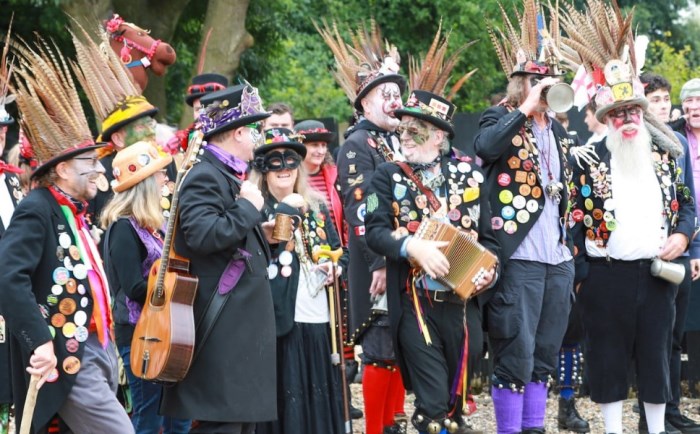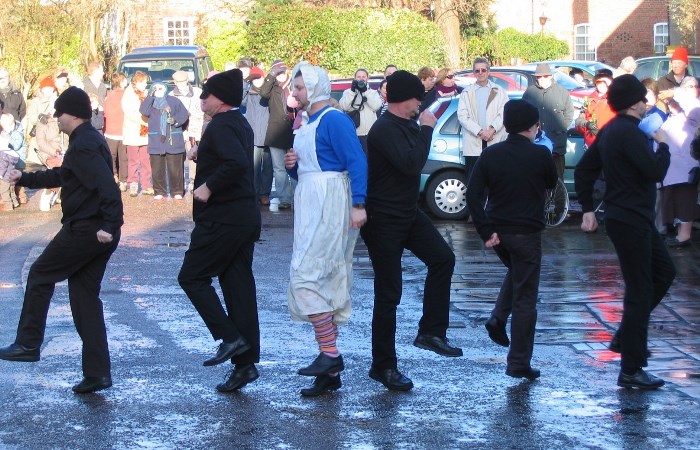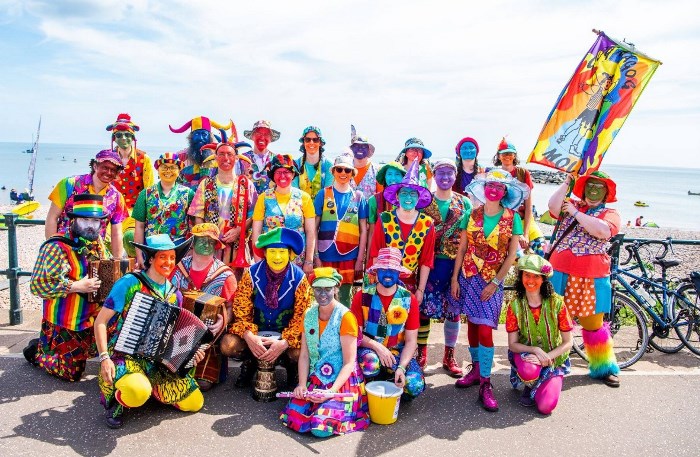The Molly dance is a traditional folk dance form that has captivated audiences for centuries.
It is typically performed at folk festivals by a group of dancers, typically men, dressed in distinctive costumes, including top hats, waistcoats, and brightly colored ribbons. The Molly dance is one of the many traditions that you have to see at least once if you ever get the chance to visit the UK.
This article will explore the various aspects of the Molly dance, including its origins, costumes, music, and unique features. We’ll also closely examine the dance’s role in England’s cultural and social history (and beyond.)
Let’s dive in!
Table of Contents
What Is The Molly Dance?
Molly dance is a traditional form of English folk dance that dates back to the 18th century.
The term “molly” has been used since at least 1754 to describe an effeminate man. In fact, the full form of the word (“molly-house”) was a derogative slang for homosexual men.
But eventually, the name gained a new meaning for itself and became associated with the dance and its costumes, often including brightly colored ribbons and other decorative elements.
You can distinguish it from other folk dances by its energetic and lively movements, often involving intricate stepping patterns and choreography.
The dance has also evolved over time, with different regions and communities developing their own variations and styles.
Despite these variations, the Molly dance remains an important part of English folk culture and continues to be performed at festivals, fairs, and other cultural events throughout the country.
Molly Dance Origin & History
Molly dance has a rich history in England and was traditionally performed in many parts of the Midlands and East Anglia.
The spirit of the dance is closely associated with Plough Monday, which falls on the first Monday after Epiphany. This tradition arose as a way for plowboys to fill the gap between Christmas and the start of the spring plowing season.
The plowboys would tour around the village landowners, offering to dance for money. Those who refused would be penalized in various ways, including plowing a furrow (a trench) across their lawn.
So, in a way, the dance came about as more of a “creative job” than a fun, social dance like so many other folk dances.
The molly dance is a way for poor workers in rural England to make money during the winter when the fields were frozen over, and no work could be found.
Because of the “penalty” (which was most definitely illegal), the dancers usually concealed their identities as they perform by blackening their faces with soot and dressing up in a modified version of their Sunday best.
This typically involved black garments adorned with colorful scarves and other decorative elements.
Originally, this dance form was an all-male tradition, but one member of the trope would dress up as a woman and become known as the “Molly.”
The dancers wished to gain employment from the same landowners shortly afterward. And Molly’s cross-dressing and feminine attire added a playful and subversive element to the performance.
However, the dance began to decline in popularity during the early 20th century, around the 1930s, with the last known performance taking place in Little Downham near Ely, Cambridgeshire, in 1933.
Early recordings of the Molly dance were very rare.
In fact, we only have one single recording, made by musical researchers Russell Wortley and Cyril Papworth, of a performance in the villages of Comberton and Girton, just outside of Cambridge.
We also found historical records of dancing performed in north Manchester and Salford. But it’s worth noting that in these communities, there wasn’t any actual dancing at all.
Rather, children would dress up in costumes, with boys often dressing as girls and wearing rouge. They would then go from house to house, asking for small amounts of cash, similar to trick-or-treat (but with money instead of candies!)
Unfortunately, the fun tradition died out rapidly in the post-war eras (after the 1950s) due to slum clearance programs, which aimed to develop slums into more appropriate housing and other developments.
But while the thought behind the programs was good, the programs also destroyed many long-standing communities across Manchester and, with them, the Molly dance.
Check more: Charleston Dance: Origin, Steps, Music & More Facts
Molly Dance Costumes
Costumes are the most important part of the molly dance. After all, the cross-dressing attires of “The Fool” (or “the Molly”) was what gave the dance its name in the first place.
In the past, it’s worth noting that many of the costumes worn by molly dance tropes won’t be considered politically correct or socially acceptable today.
Dancers have been known to dress up as red Indians, wear straws, create false humpbacks, and mimic people with disabilities.
To conceal their identities, dancers disguise their faces using masks, face blacking, goggles, and other methods. The “disguise” further plays into the subversive and irreverent nature of the dance.
But of course, the “star” of a molly dance show is always the cross-dressers.
Several members of the trope would dress up in women’s clothing. There are many explanations as to why they do this. The most plausible theory is that it’s much easier and cheaper for men to borrow costumes from women they know.
Plus, seeing men dressed in women’s clothes back then would be quite a funny sight for people back then!
Modern Molly dancers, of course, no longer perform these rough jokes as society changes. Rather, they wear Edwardian-style working men’s attire with added touches such as sashes, rosettes, rags, and ribbons.
To add a bit of outrageousness to their costumes, they may mix and match colors and patterns that aren’t normally worn together to turn their costumes into literal eyesores.
Many teams also use face paint as a disguise (black face paints are no longer acceptable.)
The Molly still exists in modern molly dance tropes! Every trope has at least one male member taking up this role.
Notable Molly Dance Groups
If you’re looking for groups to see in the UK or simply want to find good dance recordings, here are a couple of Molly dance groups you can check out.
Old Glory
Old Glory is a dance group founded in 1994 to revive the Molly dancing tradition in East Suffolk, England.
As part of the group’s performance, two main characters led the cast in a fun performance: the “Lady” and “Lord,” representing the local upper-class gentry.
The cast also consists of other characters, such as the “box-man,” who carries a collecting box to take donations from the public as they perform, and the “broom-man,” who clears the way for the cast as they make their way down the streets.
And, of course, the special part is that even though there’s the “Lady” role – one that you’d expect to be done by a female cast member – all of the dancers in the group are men.
The women are the musicians in the background, playing various instruments, from recorders to drums and “tea-chest” bass (a makeshift bass made from an old wooden box).
Pig Dyke Molly
The Pig Dyke Molly is a local dance group from out of Fletton, Peterborough. They’re quite well-known in the city for their street performances in black-and-white body painting.
Not much information is known about the group and their performance. But by what we do know about them, they perform for a good cause!
The Pig Dyke Molly makes regular donations to the MacMillan Cancer Support charity.
They’ve been one of the charity’s most active supporters by far, making their first donation in 2000, and haven’t stopped for years (the only exception being in 2021 when COVID put a stop to their performance.)
The last time they performed, the molly dance trope gathered around £900 for the charity, as well as £200 for the Macular Society.
The Belchamp Ploughboys
The Belchamp Ploughboys (also known as “Belchamp Morris” after the village of Belchamp St Paul, North Essex, where they hailed from) is a storied and well-known molly dance group still around today.
Founded in 1976, the group has been touring around the UK and many other countries (France, Germany), spreading their traditions along the way.
The group can be instantly recognized by their full black face paint, which has gotten them into some controversies. But the black face paint wasn’t meant to be a racist symbol.
Rather, it’s meant to represent the soot on the faces of working-class people back in the day to conceal their identities as they perform the dance. It’s a harmless part of their tradition, and rightfully, they refused to give up.
A short story on their website about how a producer asked them to remove the face paint in one show, but they kept refusing until they were allowed to perform with it.
The group maintains a YouTube channel where you can find great recordings of their performances. And, of course, if you want to give their shows a shot, they upload their schedule on their website!
Mersey Molly
Formed in 1960 as a merger between two dance groups, the Mersey Molly has been performing nationwide for decades.
Although the dance group performs a variety of folk dances, according to their website, they currently have three kinds of Molly dances in their repertoire.
If you ever manage to catch one of their performances, you’ll most likely be given a show of two or three classic Molly dances, named “Seven Champions” and “Ouse Washes Molly.”
And like most folk dance groups, they’re always looking for volunteers to fill their ranks. Give it a shot if you want to participate in the jollies and live in the area!
Gog Magog Molly
Information about the group is sparse on their website, but we know that Gog Magog Molly is based in Cambridge and has been practicing and performing on the weekends to local folks in Cambridge for years (dating back to 2010!)
The group uses bright colors and patterns in their costumes while dancing to high-energy traditional tunes.
Give their website a shot and check local folk festivals for their appearances. Most recently, the trope appeared at the Whittlesea Straw Bear Festival 2023!
Final Words
Molly dancing is a fascinating and unique English traditional dance with an incredibly rich history, as you can see.
From its origins in rural England as a way for workers to earn money during the harsh winter months to its evolution into a form of entertainment and celebration, the molly dance has adapted and changed over time.
But fortunately, today, it still maintains many of its traditions and customs that made it so great, like the colorful costumes and the face paints!
We hope this guide to the dance has been informative for you!
What’s your favorite part about this dance? Do you intend to see it in person one day? Tell us in the comments!
